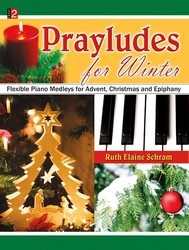- |
User Links
How Bright Appears the Morning Star
Hymn Information
- First Line
- How bright appears the Morning Star
- Alterer
- William Mercer (1859)
- Author
- Philipp Nicolai (1599, alt.)
- Tune Name
- WIE SCHÖN LEUCHTET
- Composer
- Philipp Nicolai (1599)
- Adapter and Harmonizer
- Johann S. Bach, 1685-1750
- Topic
- Biblical Names and Places: Jesse · Church Year: Epiphany
Copyright Information
- Text Copyright
- Public Domain
- Tune Copyright
- Public Domain
- Reprint/Projection Information
- Words and Music: The Words and Music are in the Public Domain; you do not need permission to project or reprint the Words and Music.
Full Text
Scripture References
Thematically related:
- st. 1 =
- st. 2 =
Further Reflections on Scripture References
Stanza 1 begins with the words "Morning Star" from Revelation 22: 16 and proceeds to give Old Testament names for the Messiah–"O Righteous Branch," "O Jesse's Rod." Stanza 2 relates how Christ left his glory to become human for our salvation. Both stanzas 1 and 2 end with a prayer of petition. Stanza 3, with a prayer of praise, rejoices in Christ's incarnation and exhorts the Incarnate God to "ride on, great Conqueror, till all know your salvation."
Confessions and Statements of Faith References
Further Reflections on Confessions and Statements of Faith References
In stanza 1, this song gives Jesus multiple names: “Righteous Branch, Jesse’s Rod, Song of Man and Son of God,” and “great Emmanuel.” Belgic Confession, Article 18 explains the process by which he took on the flesh and blood of children and then concludes by saying, “In this way Christ is truly our Emmanuel—that is: ‘God with Us.’” Stanza 2 refers to the way in which Christ “cast a pitying eye on his helpless creature.” Our World Belongs to God, paragraph 5 uses a much stronger reference in professing that God sent Jesus into the world because of his “fierce love.”
How Bright Appears the Morning Star
Call to Worship
Assurance
Blessing/Benediction
Additional Prayers
How Bright Appears the Morning Star
Tune Information
- Name
- WIE SCHÖN LEUCHTET
- Key
- D Major
- Meter
- 8.8.7.8.8.7.4.8.4.8
Recordings
Musical Suggestion
- Stanzas 1-2: choir (SATB), congregation, organ (from hymnal)
- Modulating interlude from D to F
- Stanza 3: choir only, using Cantata 172 setting with instrumental descant
- Michael Praetorius prepared a highly-effective setting for choir (easy) and solo voices (more difficult).
- The Eulenburg or Schirmer editions of the hymn are also most useful,although the text they incorporate is from a different translation than that in the hymnals.
- Concordia publishes a chorale concertato on the tune and text by Harold Rohlig. Again the text (and also the rhythm of the melody) is different from that found in the three hymnals.
- Arista publishes an SAB setting (by Hugo Distler) of the tune in the rhythm of the Lutheran hymnals.


 My Starred Hymns
My Starred Hymns






